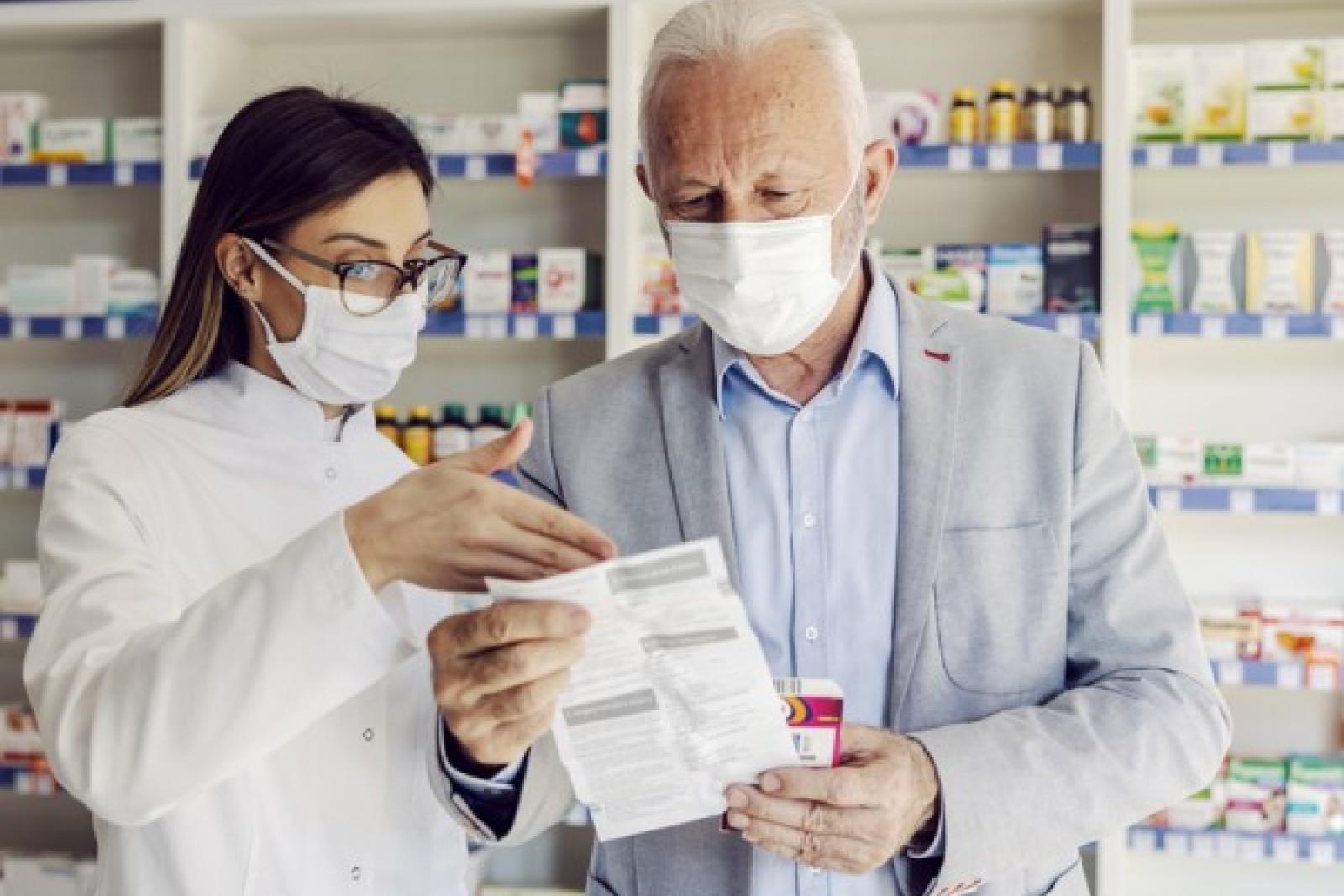College of Pharmacy and Division of General Internal Medicine collaborate to improve care

For more than 15 years, The Ohio State University College of Pharmacy has provided pharmacy services for Ohio State's Division of General Internal Medicine (OSUGIM). An important component to the college's success at OSUGIM is having embedded pharmacists working side-by-side with the rest of the health care team, including physicians, nurses, medical assistants and social workers, to allow the entire team to easily collaborate and achieve the best patient outcomes.
Soon after Stuart Beatty, PharmD, BCACP, FAPhA, professor of pharmacy practice and science at the College of Pharmacy, started practicing at the clinic and educating medical residents, it became evident that OSUGIM would be an exceptional site for experiential training and implementation of a pharmacy residency program given the collaborative and innovative environment and expanding role of the pharmacist.
OSUGIM has been the primary practice site for up to three pharmacy residents per year since 2009, with many graduates of the program going to start similar innovative programs in diverse settings across the country. Pharmacists at OSUGIM work collaboratively with all health care providers to start and adjust patient medications; order monitoring labs; and optimize medication regimens for diabetes, hypertension, smoking cessation, behavioral health management and HIV PrEP.
“The embedded model facilitates strong collaboration with the physicians,” Dr. Beatty said. “There’s still a lot of gray area in medicine and because we work side-by-side with the physicians, we are able to problem-solve issues together to select the best treatment regimen for our patients. This innovation is unique and provides a true team-based care attribute to everything we do.”
OSUGIM has seven sites in its network with plans to expand; each site has its own dedicated pharmacist or team of pharmacists.
“We were able to create strong working relationships and collaborative care models early on, but the initiation of value-based payment contracts in the primary care environment allowed OSUGIM to invest in more pharmacists expanding chronic disease management and other initiatives," said Kelli Barnes, PharmD, BCACP, associate professor of internal medicine at the College of Medicine and lead pharmacist for OSUGIM. “The ability to receive reimbursement for our pharmacy services has really helped expand the impact of our pharmacy team. We have been doing this work for years and it is great to be financially recognized for our contributions to the team.”
Recent changes to Ohio law have allowed the pharmacists at OSUGIM to bill some insurers directly for their service, a new and important aspect of pharmacy practice known as "provider status."
According to Dr. Barnes, “With the depth of patient care and practice management experience our pharmacists have developed, we were able to quickly adapt to telemedicine, provide significant support in COVID-19 vaccination efforts and develop processes to screen all OSUGIM patients for appropriate use of COVID-19 treatment medications.”
The value of pharmacists in the practice is reflected by the growing nature of GIM. When the program hires more physicians, they also hire more pharmacists.
“The pharmacists at OSUGIM have become true leaders in pharmacist-provided care across the country," Dr. Beatty said. "The concept of what pharmacists can do to assist in primary care is growing and we are now being reimbursed for this contribution. When this partnership started between the College of Pharmacy and OSUGIM, it was one pharmacist helping to educate medical residents. To see where the practice is today is a testament to the work of and passion displayed by the many pharmacy residents and pharmacists who have been a part of the OSUGIM team. To see the value of the pharmacist being recognized and our role expanding really is a dream come true.”